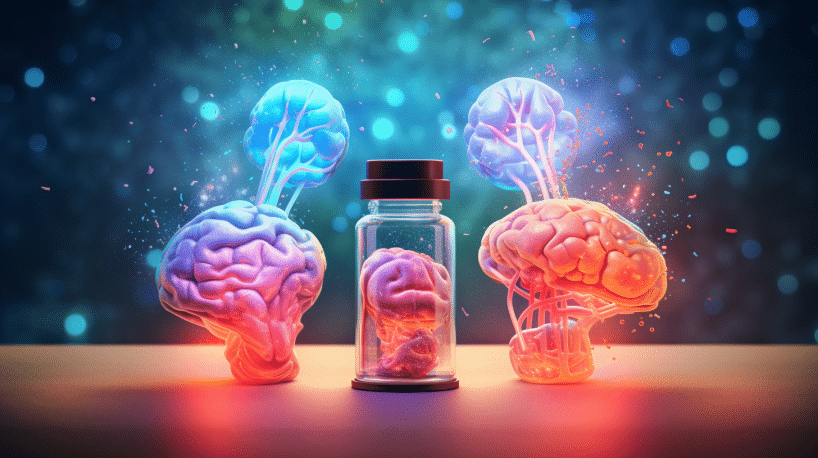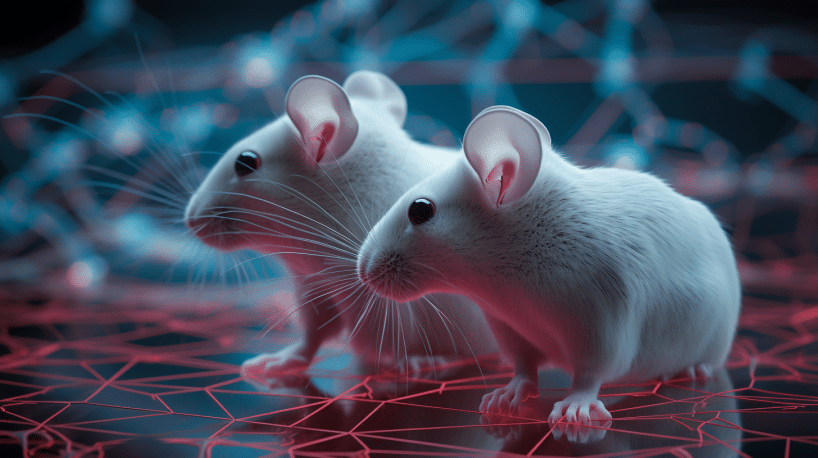Researchers find similarities in brain activity induced by different psychedelic drugs in rats, providing clues to how they alter consciousness.
Key facts:
- Psychedelic drugs like LSD and ketamine induce high-frequency brain waves that synchronize activity across the cortex.
- This hypersynchrony was seen between the frontal cortex, sensory areas and emotion centers like the ventral striatum.
- The findings challenge models stating psychedelics work just by changing firing rates of individual neurons.
- Instead, the unifying hallmark seems to be a hyper-connected state where brain regions abnormally synchronize their activity.
Source: Communications Biology. 6:737 (2023).
Psychedelic substances like LSD, magic mushrooms and ketamine have seen a resurgence in science and medicine for their potential in treating mental illnesses.
But a longstanding mystery is how these drugs induce their mind-bending effects in the first place.
Now, a team of Swedish researchers took a big step forward by recording electrical activity across the brain of awake rats given different psychedelics.
Their findings, published in Communications Biology, reveal that psychedelics of very different classes unite cortical regions into an ultra-connected state not seen under normal conditions.
This challenges existing theories and provides clues to how psychedelics induce an altered state of consciousness relevant to both their risks and benefits.
Psychedelics Come in Different Flavors But Share Effects
Psychedelics are usually divided into two classes based on their primary drug target:
- Serotonergic psychedelics like LSD and psilocybin act as agonists at serotonin 2A receptors. Their effects are blocked by serotonin 2A antagonists.
- Dissociative psychedelics like ketamine and PCP block NMDA glutamate receptors. Their effects are reversed by NMDA agonists.
Despite working through different initial pathways, both serotonergic and dissociative psychedelics produce fairly similar psychological effects in humans, like changes in perception, mood and sense of self.
This suggests shared downstream effects on brain activity that mediate the psychedelic state.
Previous imaging studies in humans and animals have proposed elevated glutamate transmission as a common mechanism.
Glutamate is the brain’s main excitatory transmitter.
However, how changes in glutamate signaling ultimately impact network activity and behavior has remained unclear.
Recording Electrical Activity Across the Psychedelic Rat Brain
To investigate the systems-level effects, the researchers designed small implants with multiple electrodes to record simultaneously from olfactory, prefrontal, sensory and limbic structures implicated in psychedelic action.

The electrodes allowed them to measure both local field potentials, reflecting synchronized activity of many neurons, and firing rates of individual cells.
This provided insights into both population dynamics and single cell activity.
Awake rats received either serotonergic psychedelics like LSD, dissociative psychedelics like ketamine, or for comparison, amphetamine.
The non-psychedelic stimulant amphetamine served to control for brain changes caused simply by drug-induced hyperactivity.
Their behavior was monitored to ensure the implanted electrodes did not prevent expression of psychedelic-induced behaviors like head twitches (serotonergic) and hyperlocomotion (dissociative).
Psychedelics Inhibit Firing Rates But Enhance Population Synchrony
Analyzing firing rates of hundreds of individual neurons revealed complex modulations with no clear unifying effect.
Serotonergic psychedelics inhibited both excitatory and inhibitory cells across all recorded brain regions.
In contrast, dissociative psychedelics excited inhibitory cells while inhibiting excitatory ones, similar to amphetamine.
This argues against theories that psychedelics work primarily by changing activity levels of specific cell types.
The firing rate changes also could not explain the behavior effects shared by both psychedelic classes.
However, a common theme emerged in the recordings of local field potentials, which capture the synchronous aspects of neuronal activity.
Both serotonergic and dissociative psychedelics induced high-frequency oscillations around 150 Hz, called HFOs, across the cortical regions monitored.
HFOs represent coordinated firing of many neurons and have been linked to integration of information.
The non-psychedelic amphetamine failed to cause HFOs, indicating they are specifically associated with the psychedelic state rather than merely drug-induced hyperactivity.
Cortical Structures Show Functional Coupling in the Psychedelic State
Remarkably, the timing of HFOs was nearly identical across regions – the activity was synchronized with submillisecond precision between far apart locations like the frontal cortex and ventral striatum.
This hyper-synchrony was not passively induced by a dominant rhythmic source but involved two-way communication between structures.
Frontal, sensory and limbic regions showed signs of local HFO generation rather than just following inputs.
Measures of functional connectivity confirmed the frontal cortex and ventral striatum were tightly coupled in the psychedelic state.
This network integration was specific to the HFO frequency band.
Increased functional connectivity between cortical regions matches findings from human psychedelic imaging.
The rat data provides the first neural mechanism, revealing submillisecond synchrony of locally generated HFOs as a potential mediator.
Aberrant Brain Communication Underlies Psychedelic Effects
The hyper-synchronous oscillations likely have major effects on information transfer in the psychedelic brain.
Normally, brain networks balance specialized local processing with integrated global communication.
But under psychedelics, the pendulum may swing too far towards hyperintegration at the expense of segregated function.
Like an over-connected computer network, rhythmic activity gets locked in sync across large distances.
This widespread communication could produce the expanded sense of self, synesthesia and other perceptual effects reported during psychedelic experiences.
But it likely impairs certain brain functions that require independent processing between regions, explaining psychedelic-induced cognitive deficits.
Excessive synchronization has been associated with disorders like schizophrenia and Parkinson’s disease.
The findings therefore also expand our understanding of how abnormal rhythmic activity arises, providing potential new treatment targets.
Bridging Micro and Macro Levels of Psychedelic Action
The study bridges cellular neuroscience with human-brain imaging to bring us closer to a unified model of psychedelic drug effects.
The authors propose investigating alterations in synaptic transmission as a mechanism that drives the rhythmically synchronized activity pattern.
While many questions remain, the work represents an important step in cracking the psychedelic code by shining light on a candidate mechanism behind their consciousness-expanding—and therapeutic—effects.
References
- Study: 5-HT2AR and NMDAR psychedelics induce similar hyper-synchronous states in the rate cognitive-limbic cortex-basal ganglia system
- Authors: Ivani Brys et al. (2023)







